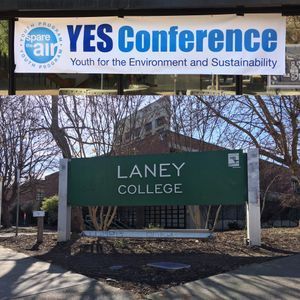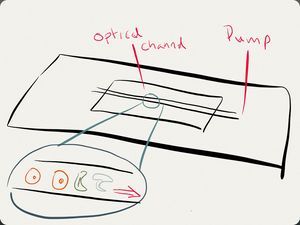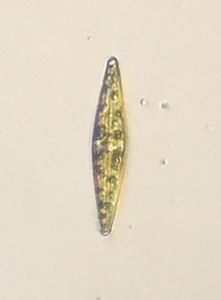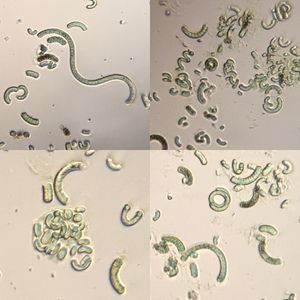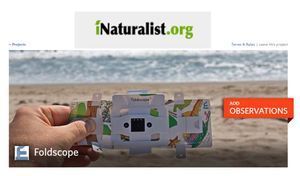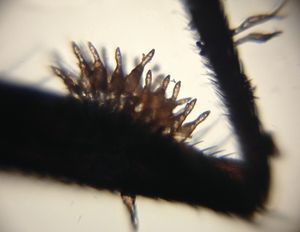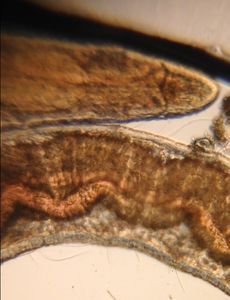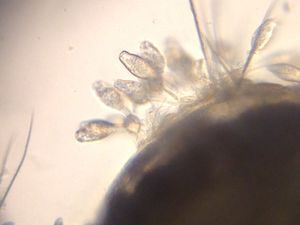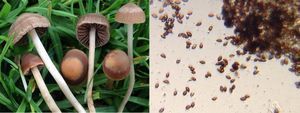Image Composites – starfish
 May 09, 2016 • 12:14 AM UTC
May 09, 2016 • 12:14 AM UTC United States
United States 140x Magnification
140x Magnification Microorganisms
Microorganisms
damontighe
I currently work as a Curriculum and Training Specialist at Bio-Rad laboratories and help teachers incorporate more biotechnology into their classroom. I worked in DNA sequencing for years including the Human Genome Project and single cell genomics (termite, cow, and other guts). I have a love of the outdoors that I spread to the public via Calnature.org. I enjoy backpacking, picking mushrooms and photography.
15posts
17comments
9locations
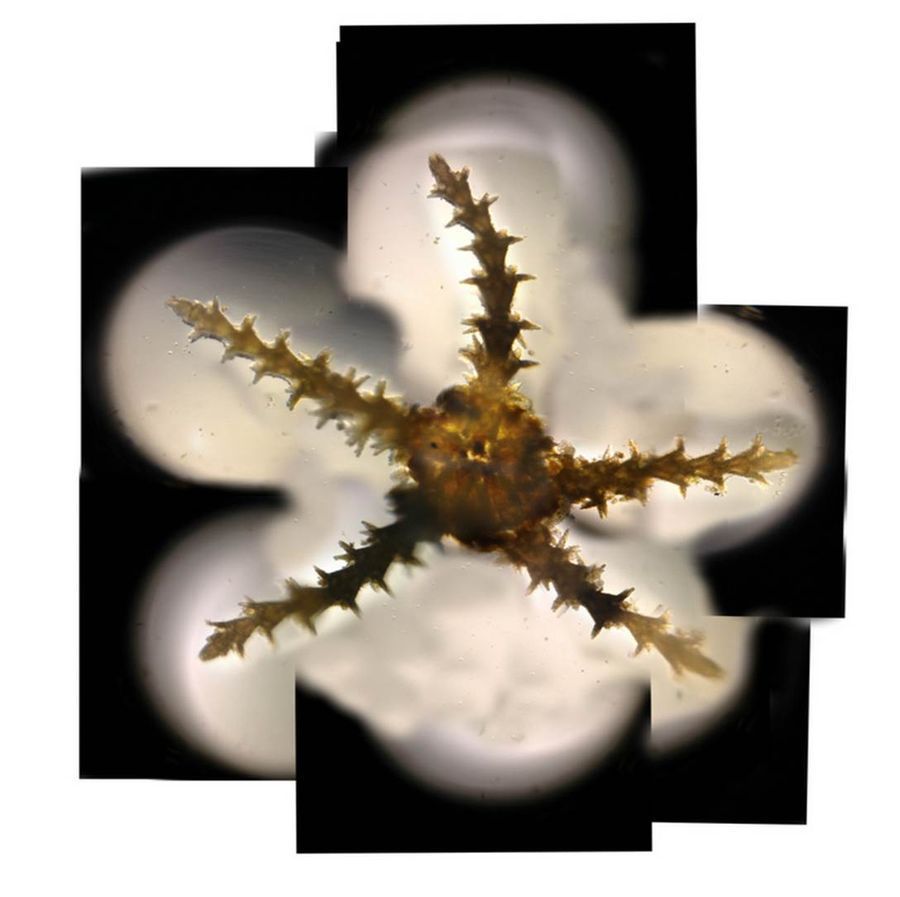
Some critters I want to look at are just bigger than the lower magnification lens can handle, so taking a tip from Tom Hata’s post https://microcosmos.foldscope.com/?p=10552 I decided to try my hand at stitching together a series of images in GIMP that were taken with the Foldscope. I went after a 3 mm brittle star that I found on the outside of sea squirt at Jack London Square in Oakland, California.
Here was just lining up all the frames before I used the cloning tool to try and build a true composite:
Here was just lining up all the frames before I used the cloning tool to try and build a true composite:
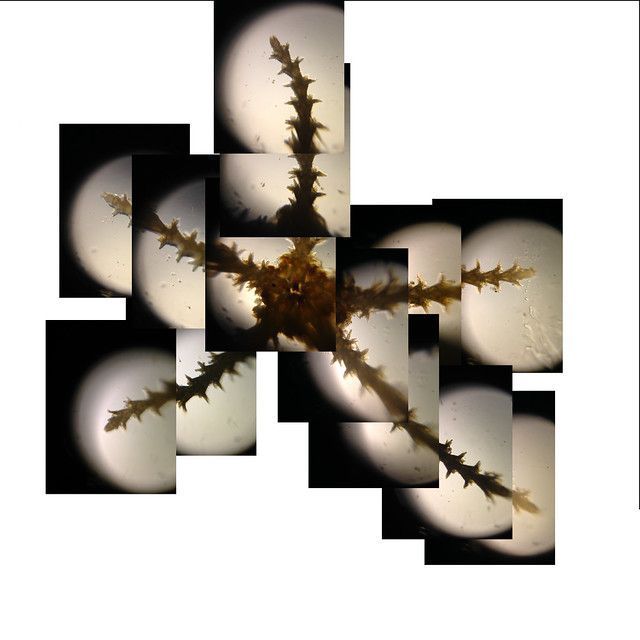
Here is the composite built by using the cloning tool in GIMP
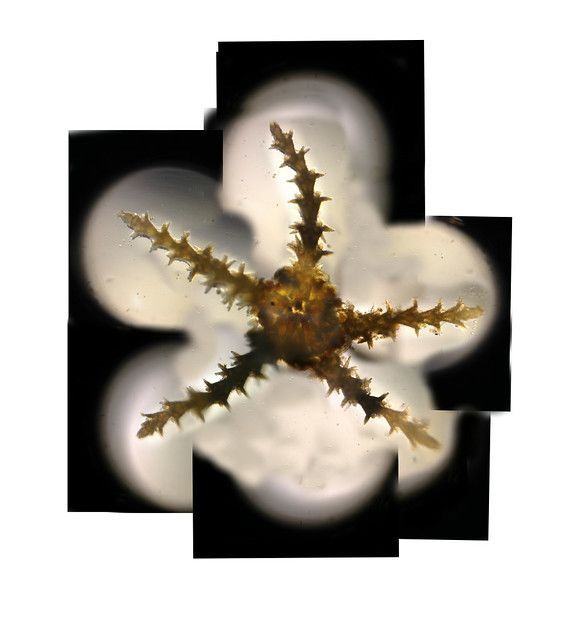
Slide Making Technique: I still need to work on my focusing technique and slide preparation as some of the frames had really nice contrast and focus and others didn’t. I really wanted to do this with a skeleton shrimp, but found that I had a hard time getting a coverslip on it in a way that it wasn’t moving around. With the starfish I laid a coverslip over it with sea water and then used nailpolish to seal the edges which made the slide stay still and gave the high quality texture that a wet mount with water gives. I tried nail polish as a mounting fluid with a skeleton shrimp but I found that it decreased some of the smaller details that I could see with water. It doesn’t look beautiful, but the glass above and below the brittle star are very clean (this is 18hrs later so some of the water evaporated):
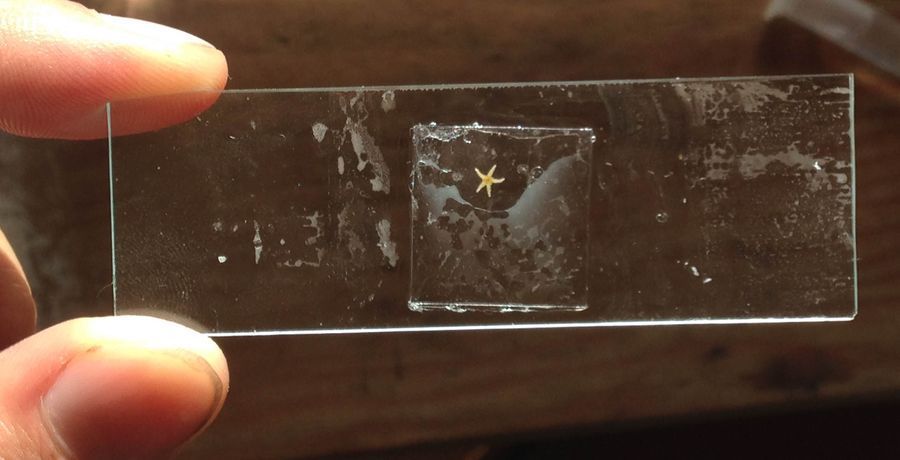
Imaging Technique : I use the magnetic strip for the Foldscope with my iPhone 5. I wipe the slide and the foldscope with lens paper before trying to image. I have a lamp that I use as my light source and I hold the Foldscope at almost parallel to the path of the light leaving the lamp, which I admit it is counter intuitive, but as I gently change the angle back and forth from the parallel position and a little side to side I’ll hit sweet spots where the image quality jumps drastically. Here is what my imaging looks like:
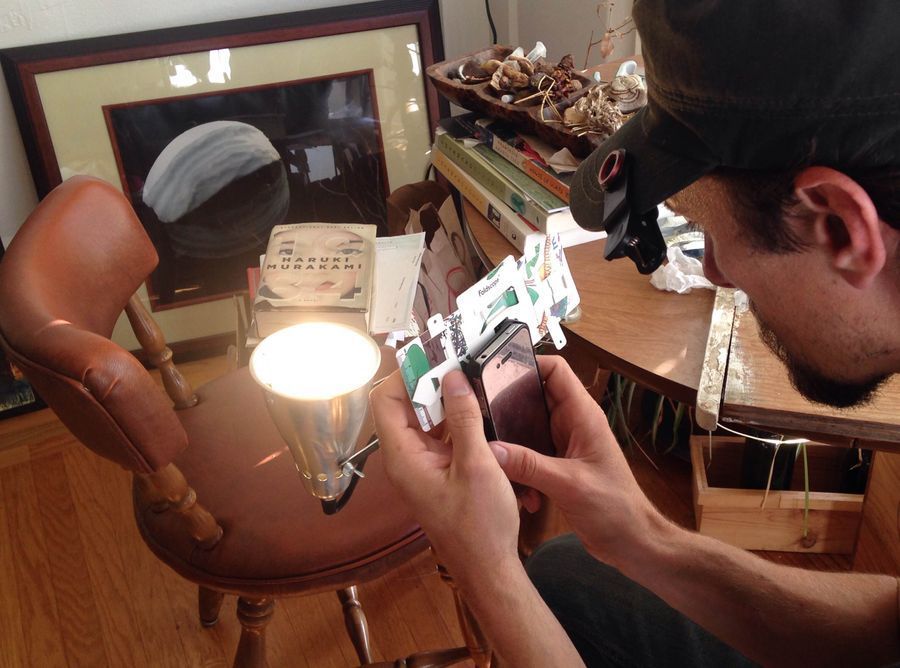
My post on fungi spores and asci I think best demonstrate the sharp images I get from this technique: https://microcosmos.foldscope.com/?p=15783
How to Find Brittlestars: There are two habitats that I find brittlestars in and the process for finding them in each location is slightly different:
Dock fouling brittlestars – Reach underneath any dock in a marine (salt water environment) and you are bound to find things hanging on for dear life. If you take a pan and scrape about a handful of these dock fouling organisms into it and then place the pan out for a while where you can observe it, you’ll begin to notice a lot of small organisms start crawling off the main cluster of material you collected. A majority of these little organisms tend to be Crustaceans, but occasionally you’ll observe small brittlestars in this population as well Tidepool brittlestars – Look for tidepools where there are rocks that are easy to move in the bottom of the tidepool, preferably with a little bit of sand. If you begin pulling some of these rocks up and checking the sand depressions closely you can find brittlestars. You often times need to look close as they have patterns that help them camouflage well with the sand. Unlike typical starfish, brittlestars move relatively quickly, so even just staring at the removed rock location for 30 seconds will be enough time for them to get comfortable and start moving again which makes them easier to see. —————————————————————————————————————————————
2016.05.11
While researching this organism further I read some papers that said this starfish has bio-luminescence . For whatever reason its hard to not love things that glow, so I had to investigate. I went back to the docks and found a few more Amphipholis squamata to take home. I tried 30 minutes exposures with my highest ISO and got nowhere, so back to paper research until I turned up a paper by D. Deheyen that notes KCl can cause a depolarization event in brittle stars and trigger bright bio-luminescent bursts. Lacking KCl around my home I found that Emergen-C fizzy vitamin drinks have potassium carbonate in them, so I dissolved the powder into a small volume of water and tried adding that to a brittle star and bam! a light show. The brittle star I was using was far to large for the foldscope so I shot it with my macro lens. You can see the image here: https://flic.kr/p/H1msgW
I don’t know how the bio-luminescence works in this taxa beyond that it takes place in photocytes, so I still have some reading to do!
How to Find Brittlestars: There are two habitats that I find brittlestars in and the process for finding them in each location is slightly different:
Dock fouling brittlestars – Reach underneath any dock in a marine (salt water environment) and you are bound to find things hanging on for dear life. If you take a pan and scrape about a handful of these dock fouling organisms into it and then place the pan out for a while where you can observe it, you’ll begin to notice a lot of small organisms start crawling off the main cluster of material you collected. A majority of these little organisms tend to be Crustaceans, but occasionally you’ll observe small brittlestars in this population as well Tidepool brittlestars – Look for tidepools where there are rocks that are easy to move in the bottom of the tidepool, preferably with a little bit of sand. If you begin pulling some of these rocks up and checking the sand depressions closely you can find brittlestars. You often times need to look close as they have patterns that help them camouflage well with the sand. Unlike typical starfish, brittlestars move relatively quickly, so even just staring at the removed rock location for 30 seconds will be enough time for them to get comfortable and start moving again which makes them easier to see. —————————————————————————————————————————————
2016.05.11
While researching this organism further I read some papers that said this starfish has bio-luminescence . For whatever reason its hard to not love things that glow, so I had to investigate. I went back to the docks and found a few more Amphipholis squamata to take home. I tried 30 minutes exposures with my highest ISO and got nowhere, so back to paper research until I turned up a paper by D. Deheyen that notes KCl can cause a depolarization event in brittle stars and trigger bright bio-luminescent bursts. Lacking KCl around my home I found that Emergen-C fizzy vitamin drinks have potassium carbonate in them, so I dissolved the powder into a small volume of water and tried adding that to a brittle star and bam! a light show. The brittle star I was using was far to large for the foldscope so I shot it with my macro lens. You can see the image here: https://flic.kr/p/H1msgW
I don’t know how the bio-luminescence works in this taxa beyond that it takes place in photocytes, so I still have some reading to do!
Sign in to commentNobody has commented yet... Share your thoughts with the author and start the discussion!
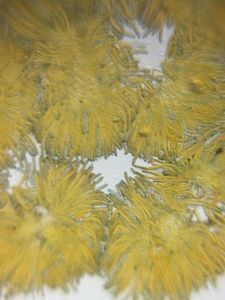
 0 Applause
0 Applause 0 Comments
0 Comments